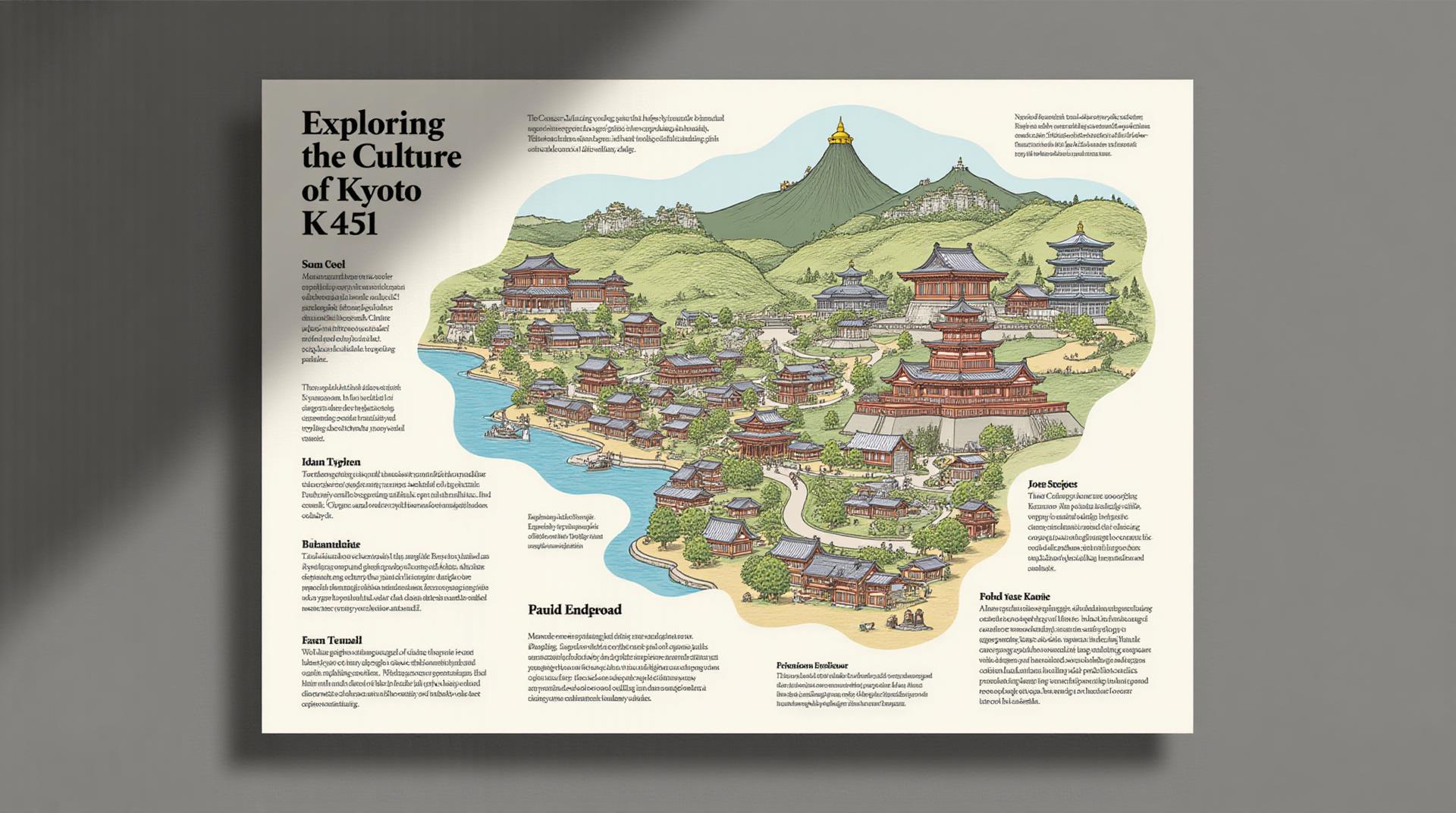Exploring the Culture of Kyoto

Unveiling the Enchanting Culture of Kyoto
Kyoto, Japan’s ancient capital, is more than just a destination for breathtaking temples and stunning gardens; it’s a living museum of tradition and refinement. Stepping into its captivating streets unveils a vibrant tapestry of culture woven with exquisite artistry and a profound respect for history.
A Glimpse into the Heart of Japanese Culture
Kyoto embodies the traditional heart of Japan, where centuries-old customs and practices still thrive. The city’s emphasis on harmony, respect, and spiritual growth is palpable in every corner. You’ll encounter temples dedicated to faith, showcasing intricate wooden architecture; traditional crafts like tea cultivation displaying the meticulousness of local artisans; and serene gardens offering tranquil respite under delicate cherry blossoms. This allure makes exploring the culture of Kyoto a truly immersive and enriching experience.
Immersion into Kyoto’s Sacred Shrines
Kyoto’s abundance of shrines reflects its reverence for the divine. The Fushimiya, with its elegant pagoda and meticulously manicured grounds, will make you feel in touch with the divine. The Isuien is another peaceful shrine, offering a beautiful garden forest where your senses will be aroused by the ancient sculptures and ornate offerings. The Ginkaku-ji, Zen temple, promises serenity and contemplation. This temple, adorned with a striking silver pavilion, provides a hauntingly beautiful spiritual shift in perspective.
Zen Gardens: Tranquility and Peaceful Reflection
Kyoto’s iconic zen gardens are like small, miniature worlds inviting contemplation through their beauty and deliberate design. At Ryoan-ji, the famous rock garden, visitors walk through serene pathways, finding peace amidst towering rock fragments and carefully placed sand. The beauty of concise beauty becomes increasingly apparent in every garden.
The Rituals of Traditional Arts
Kyoto is famed for its artistic traditions, and a visit here is a chance to engage firsthand in these crafts. You might appreciate the delicate beauty of Kintsugi – the art of repairing pottery with gold instead of masking the broken pieces, or watch a geisha gracefully move through ceremonies. These observations to the wonders of Japanese art are just one glimpse into the artistry of Kyoto.
Respect for Heritagd and Tradition
Respectful observation, however, is an essential part of exploring Kyoto’s culture. Observe customs, dress lightly, and remove your shoes upon entering houses and shrines.
Practical Tips for a Meaningful Visit
- Transportation: The city’s well-organized public transportation system is efficient and reliable. Consider purchasing a Japan Rail Pass for comfortable and affordable travel.
- Budget: Keep in mind that Kyoto has a variety of tourism gear. Budget-friendly options like hostels and budget-friendly restaurants are available to save money.
- Accommodation: Kyoto offers a wide range of accommodation options, from traditional ryokans, offering a sense of seclusion, to modern hotels. Consider the look of the neighborhood.
- Pick up a Travel Map: Getting around consciously is a helpful way to create a more peaceful experience as well.
Language Barrier: More Than Just Words
Learning a few basic Japanese phrases will enhance your experience and deepen your connection with local people. Even navigating restaurants can be a resource. A travel phrase book or phrase apps could come in handy for being understood and demonstrating respect. Additionally, basic etiquette guides will provide insights into the cultural nuances.
A Memorable Journey of Discovery
Exploring the culture of Kyoto is a deeply transformative journey. The blend of history, spirituality, art, and tradition creates an unforgettable experience. Whether you are tracing the ancient roots of Japanese culture or relishing the elegance of traditional crafts, Kyoto offers an adventure for travelers of all backgrounds. Buzzy yet tranquil, charming yet contemplative, Kyoto serves as a timeless treasure trove of culture.
Don’t just visit – embrace the spirit of Kyoto, and experience the vibrant culture firsthand.
**Resources:**
* Japan Guide – Comprehensive travel guide with detailed information on cultural experiences.
Lonely Planet – Well-known guidebook website offering tips and recommendations on activities.
Visit Japan – Official tourism website for Japan providing information on its attractions and cultural etiquette.
Check similar topics:
Explore the Culture of Kyoto: FAQs
Common Questions
Where is Kyoto located? Kyoto is the ancient capital of Japan, located in the Kansai region of the country.
What are some must-sees in Kyoto? Kyoto boasts many iconic attractions. Visitors often don’t want to miss these:
- Kinkaku-ji (Golden Pavilion): A stunning temple covered in gold leaf, boasting a beautiful reflection pond.
- Ryoan-ji Temple: home to the iconic rock garden, known for its minimalist design.
- Fushimi Inari Shrine: Famous for its thousands of vibrant red torii gates winding through the forest.
- Gion District: Kyoto’s geisha district where you may witness traditional tea ceremonies and performances.
What is the best time of year to visit Kyoto? The weather in Kyoto can vary greatly due to its varying seasons. For a blend of warm and rainy weather, visit March-May or October-November. Summer can be extreme in temperature, while winter is slightly cooler.
How can I experience local culture?
- Visit Nishiki Market: The bustling Nishiki Market offers a glimpse into authentic Japanese tastes and food stalls.
- Attend a tea ceremony: Experience an elaborate and serene tea ceremony, an essential part of Japanese culture.
- Participate in calligraphy or ikebana (flower arrangement): Several artisan workshops teach these traditional Japanese arts.
- Witness a traditional kabuki performance: Enjoy a vibrant spectacle of music, dance, and costumes typical of Kabuki, one of Japan’s oldest forms of theatre.
Further Exploring
For more information and resources:
-
Local tourism website:
(You can insert your own local tourism website
-
Guide books for Kyoto:
(You can insert your own guide book names)